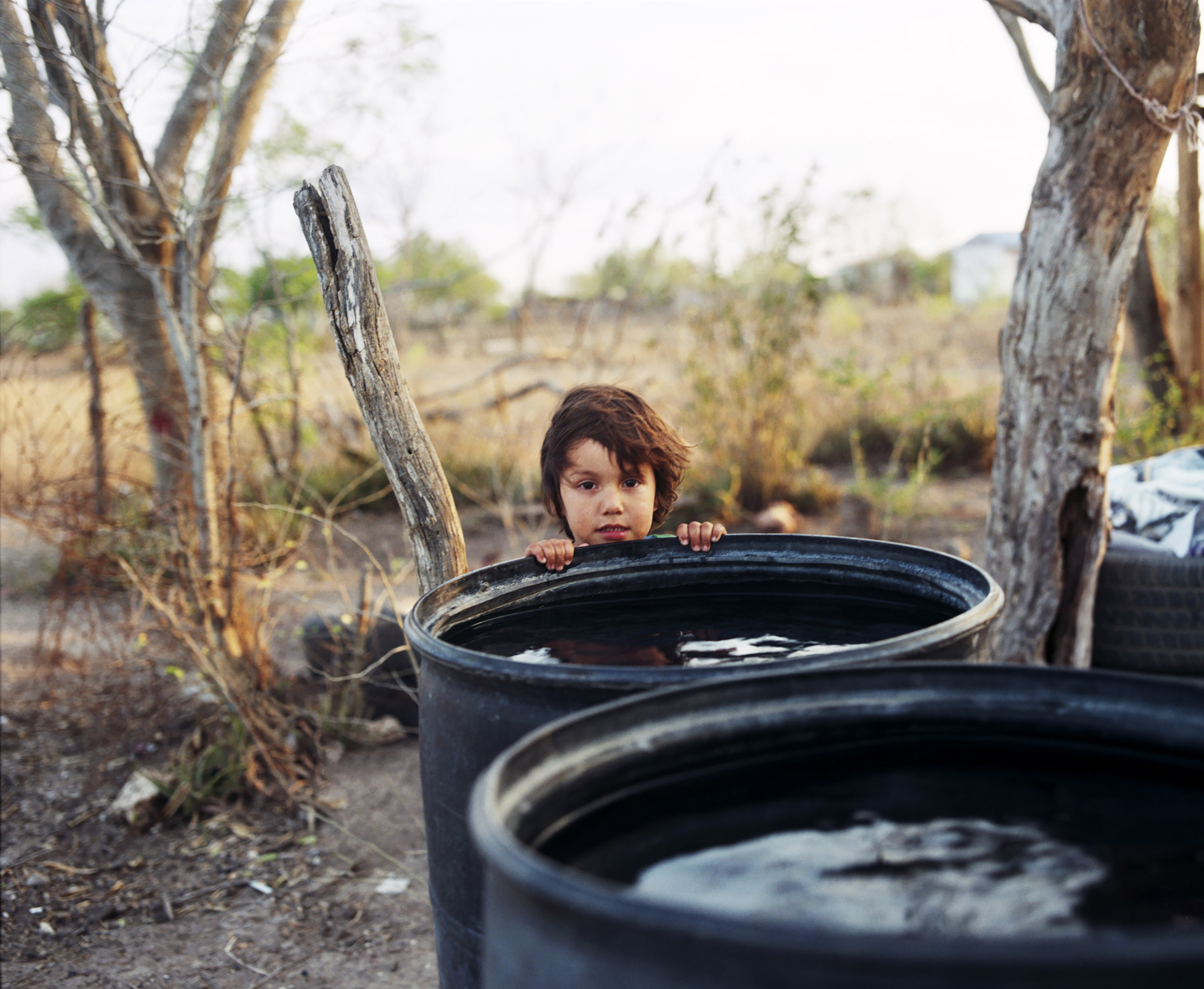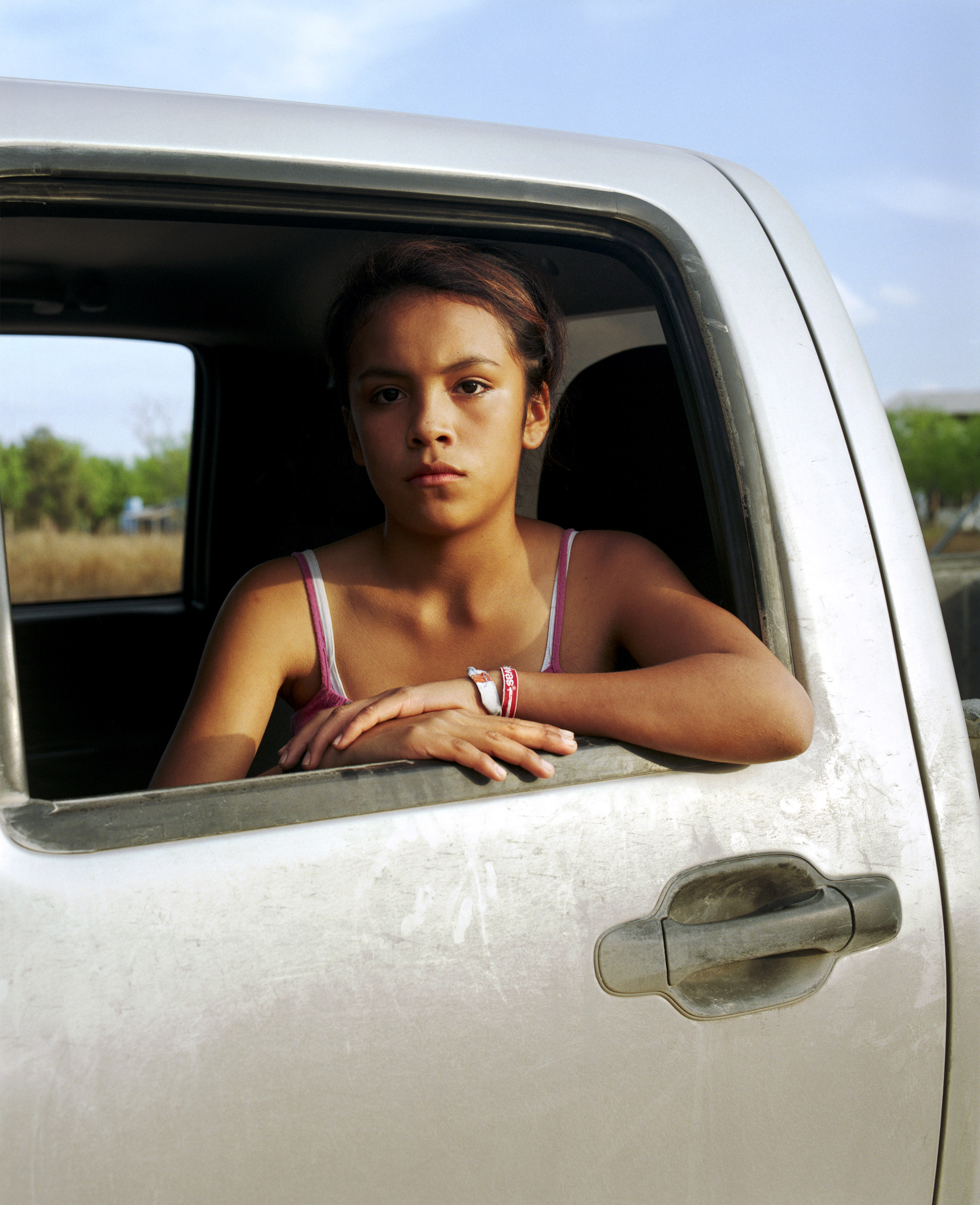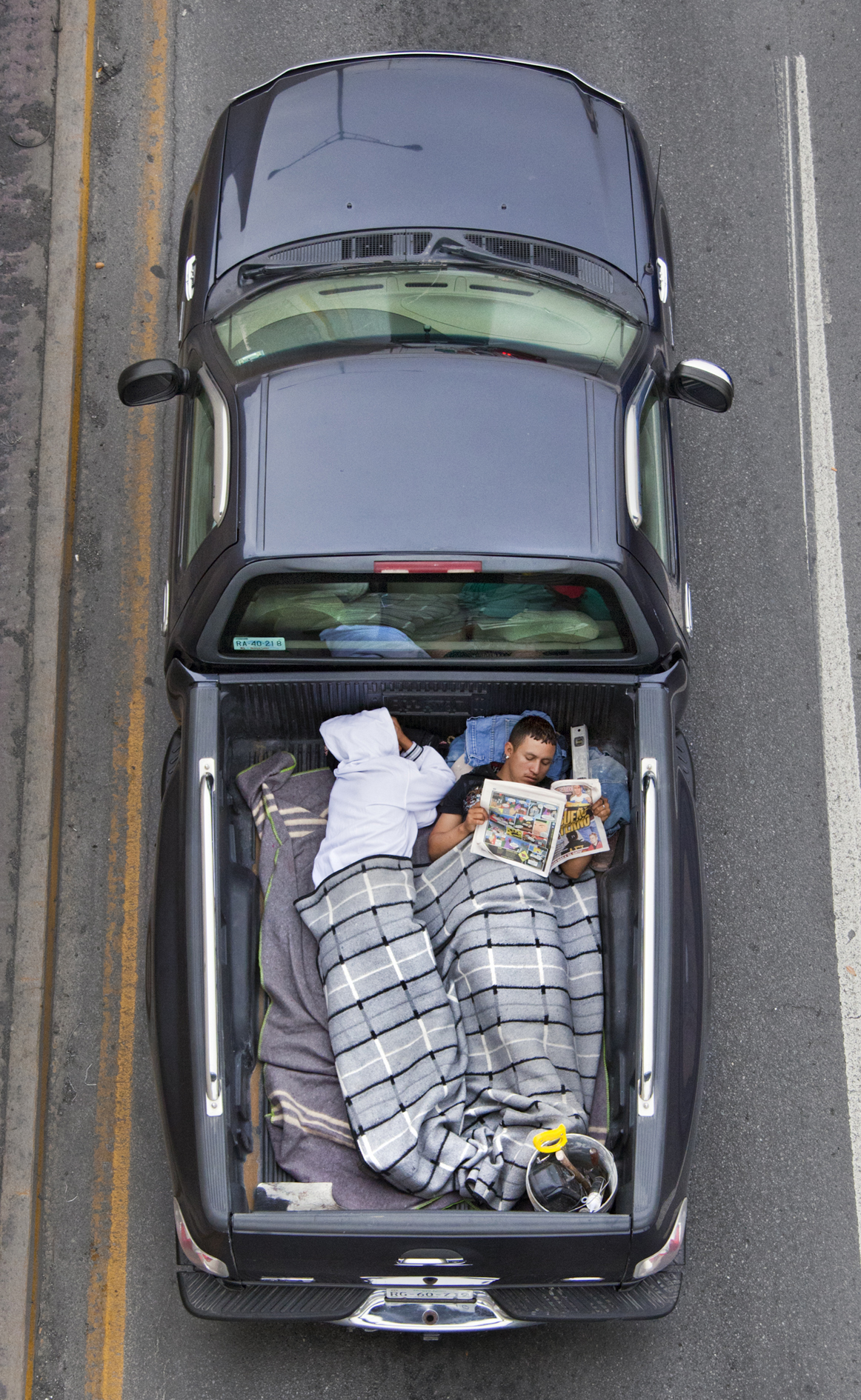
American photographer, peace activist and educator Raechel Running at the border fence in Agua Prieta, Mexico, where she continuously works with a local community. Part of photographer Stefan Falke’s ongoing project LA FRONTERA. © Stefan Falke.
The border between the United States and Mexico has been fraught with conflict since its line was created. It balances imagination and realism, being both mythically symbolic and irrefutably firm. Now that the border has been thrust once again into the political spotlight, its history, the cultures it separates, and the people who call it home have inspired many contemporary art projects.
Stefan Falke, a photographer based in New York, examines cultural life on both sides of the border. His ongoing project, La Frontera, documents the lives of more than one hundred eighty artists and curators who call the region home. His photographs capture the spirit of creativity and myriad cultures that transcend divides, revealing the range of artistic expressions along the two-thousand-mile expanse.
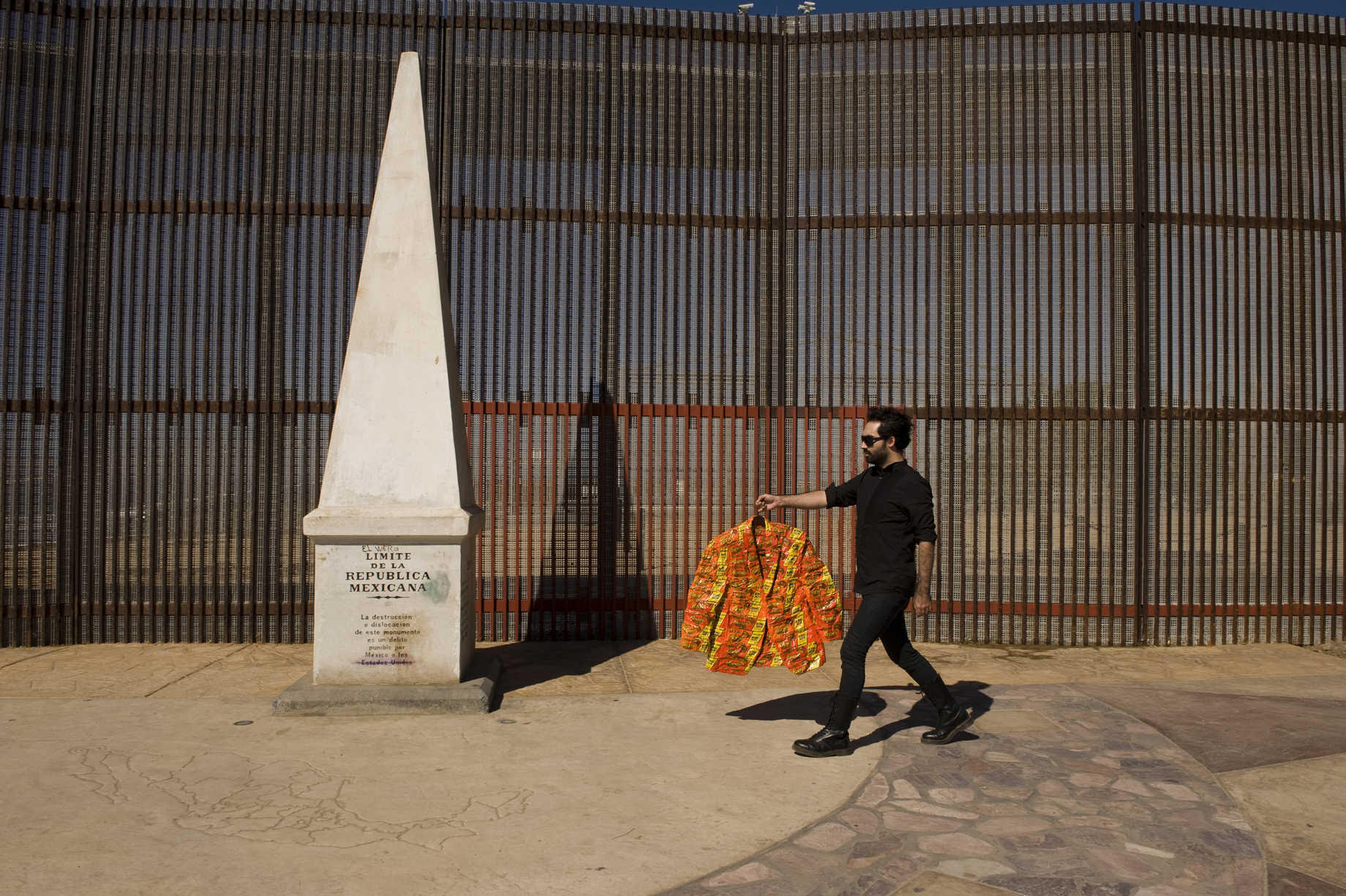
Artist Pablo Llana at the border fence in Playas de Tijuana, Mexico. The jacket is entirely made from Reese’s king size peanut butter cup wrappers. Pablo Llana’s art often depicts extreme and unhealthy food consumption in the industrial world. Part of LA FRONTERA: Artists along the US Mexican Border. © Stefan Falke.
Mexico-based photographer, Alejandro Cartagena, also seeks to represent life along the border, and his work subverts stereotyped images of Mexicans. His series, Between Borders, documents the rural and tranquil life of rancheros outside the city of Reynosa through intimate portraits and arid landscapes. Another project, Carpoolers, captures aerial views of Mexicans traveling to work in the open beds of pickup trucks. The series freezes the fleeting and connects workers with the tools that define their daily lives.
While many artists focus on the people who call the border home, others consider the border’s intangibility. In April 2016, Ana Teresa Fernandez created a social sculpture titled Borrando la Frontera (Erasing the Border), in which she and a group of US and Mexican volunteers painted a fifty-foot stretch of the border wall in Nogales, Mexico, the color sky blue, which made the rusty wall seem invisible. While the work is full of political implications, it is also a powerful reminder of memories of once-uninhabited places.
For the artist Emilio Chapela, important inspirations are unimpeded transmissions and data. In 2014, he created Radio Latina, a sixteen-minute video of images of the border, captured by Google Street View, with audio from a live feed of a bilingual radio station, playing mostly Mexican folk music. The work invites one to consider the radio waves that freely cross the border while bodies and territories on either side are restricted.
The artist collective Postcommodity also looks at how people are filtered along the border. Its 2016 work, A Very Long Line (currently in the 2017 Whitney Biennial), is a four-channel-video installation in which a camera pans along border fences to a cacophonous soundtrack. Steeped in political critique, the work loudly emphasizes the contrast between what is in reach and what is kept behind bars, and raises the question of what is fabricated and what is authentic.
Finally, the New Mexico–based artist Jami Porter Lara focuses on what is left behind by those who cross the border from Mexico into the United States. She began collecting discarded, two-liter plastic water bottles in the desert, and the apparent detritus inspired a series of pit-fired clay vessels. The resulting sculptures, currently on display at the National Museum of Women in the Arts in Washington, DC, are presented like archeological relics; their purpose of holding water a powerful symbol for sustaining life. Though the fates of the people who once carried the bottles are unknown, the allegory of their journeys is remembered.
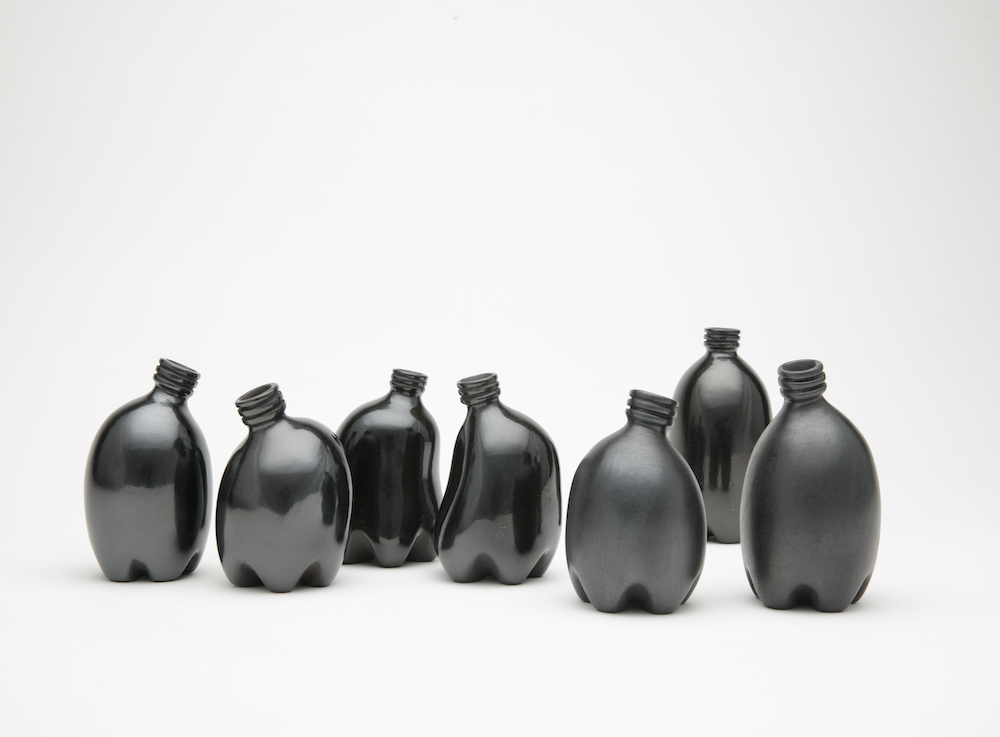
Jami Porter Lara. Go On Now (detail), 2016.
Pit-fired clay, 167 sculptures; 3-6 x 2 ½ – 3 ½ in diameter.
Courtesy of the National Museum of Women in the Arts. Photo by Addison Doty.

Jami Porter Lara. LDS-MHB-6SBR-0916CE-01, 2016 Pit-fired clay; 10 x 6 ½ x 6 ½ inches. Courtesy of NMWA. Photo by Addison Doty.
While these projects differ in medium and process, all of them seek to highlight the complexities of delineation and subtly subvert expectations of it. Through portraiture, sculpture, or optical illusion, they challenge political rhetoric with intimate perception, and, in doing so, reinforce the idea that a border wall is immaterial.

